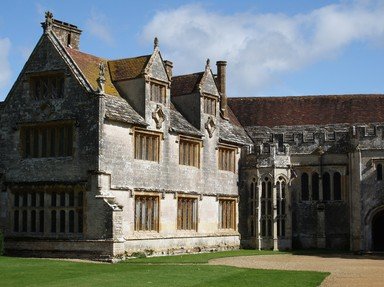Quiz Answer Key and Fun Facts
1. During what famous battle in Leicestershire was King Richard III slain, allowing Henry Tudor to ascend to the throne of England as Henry VII?
2. Who was the eldest son of King Henry VII, the Prince of Wales and first husband of Catherine of Aragon?
3. On 11 June 1509, Catherine of Aragon married Henry Tudor, just thirteen days before his coronation, in the Palace of Placentia located in which city?
4. For much of his reign, King Henry VIII lived at Hampton Court, a beautiful palace with numerous gorgeous gardens. Who famously "gifted" the palace to Henry in 1529 as he was losing the king's favor in his fall from grace?
5. It is well known that King Henry VIII had six wives and a strong desire to sire a male heir. Which woman, who was not Henry's wife, was the mother of Henry's first son to survive past infancy?
6. During the last few months of 1536, a number of uprisings occurred in Lincolnshire and Yorkshire, prompting King Henry VIII to send his forces to disperse the protests. The uprising in Yorkshire is more commonly referred to as what?
7. Edward VI, son of Jane Seymour, was crowned King of England on 20 February 1547 at the age of nine. He became the first English monarch to be raised as what?
8. There were a lot of executions that occurred during the reigns of the Tudor kings and queens. Which method was NOT used by the English of that time to perform executions?
9. In 1571, there was a conspiracy to assassinate Elizabeth I and replace her with Mary, Queen of Scots. What was this plot called?
10. Which famous church in London, used for royal weddings and burials, was made the final resting place for two Tudor kings and four Tudor queens (two monarchs and two consorts)?
Source: Author
kaddarsgirl
This quiz was reviewed by FunTrivia editor
bloomsby before going online.
Any errors found in FunTrivia content are routinely corrected through our feedback system.
